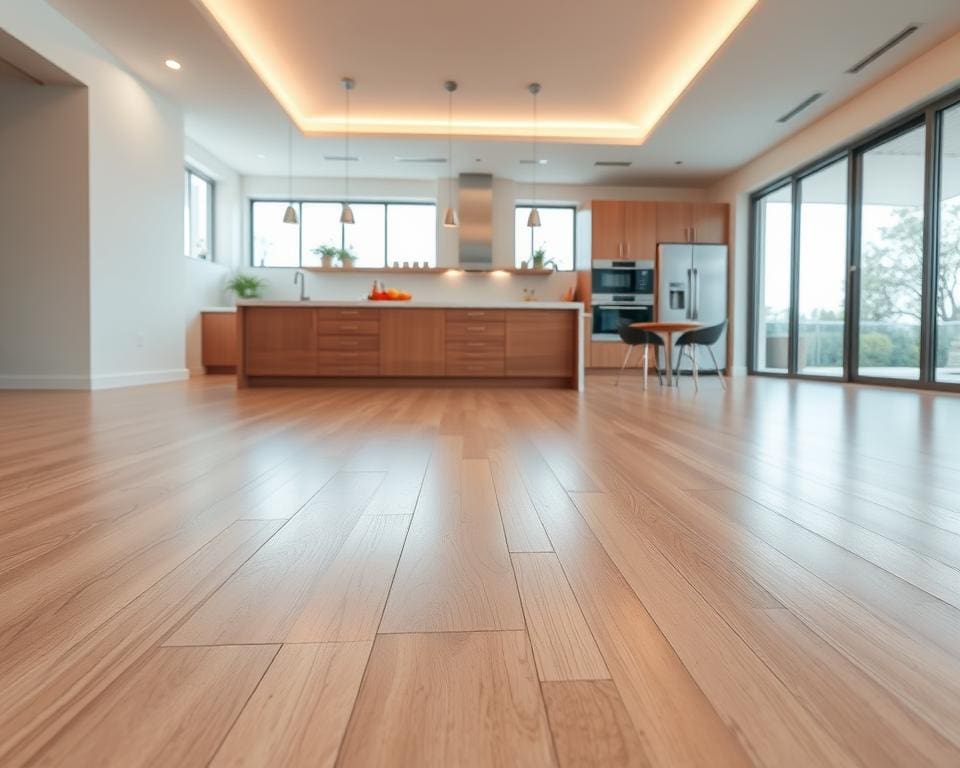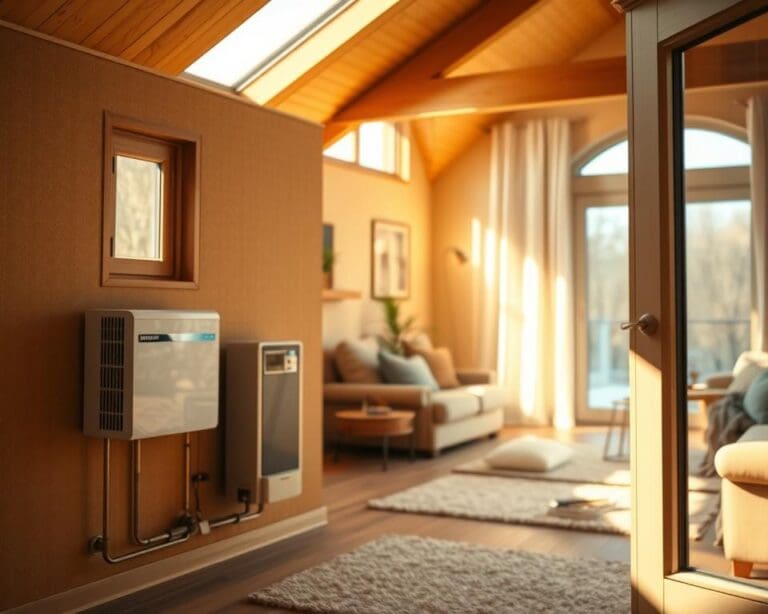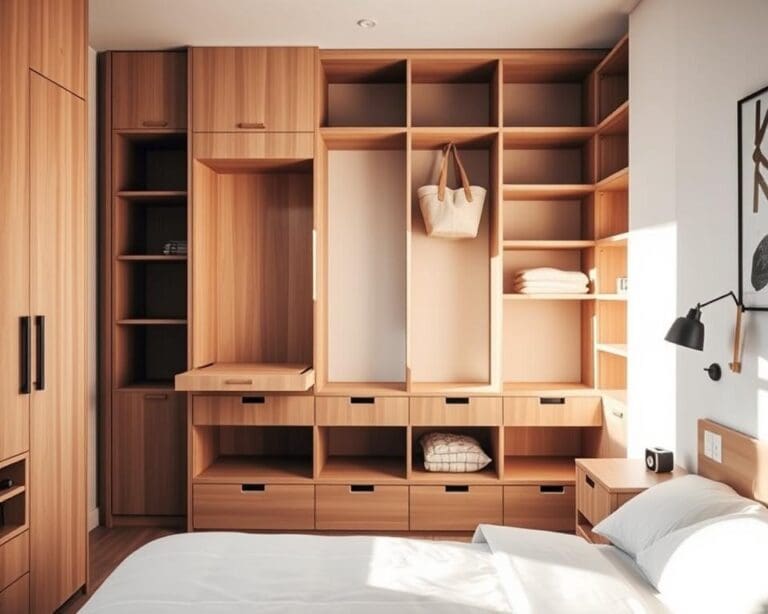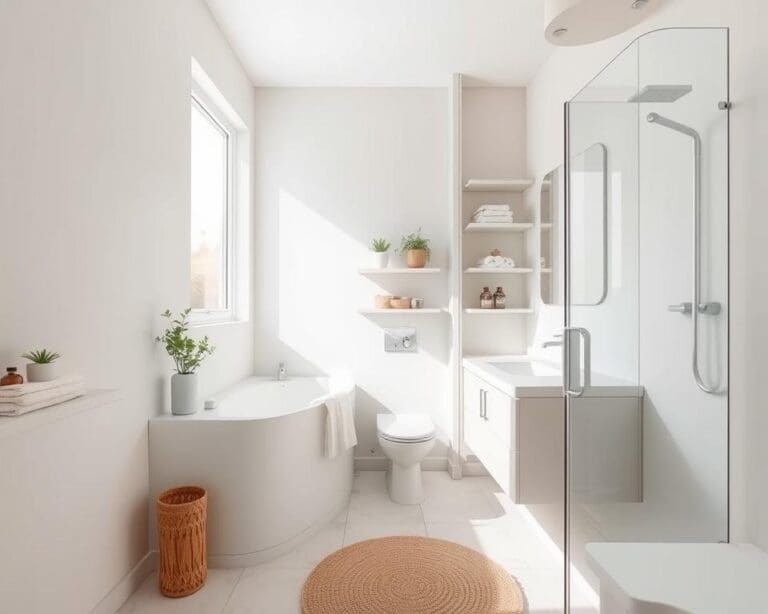Choosing the perfect flooring for your kitchen is a fundamental aspect of creating a stylish and functional space. With a variety of modern kitchen flooring options available, it can be overwhelming to determine which materials will suit best in contemporary kitchen designs. The right flooring significantly impacts not only the aesthetic appeal but also the practicality of your kitchen space. This section will explore the essential considerations in selecting flooring for UK kitchens, inspiring homeowners looking to remodel or update their beloved cooking areas.
Understanding the Importance of Kitchen Flooring
Choosing the right flooring is integral to achieving a harmonious kitchen design. This choice not only shapes the visual appeal of the space but also plays a vital role in its overall functionality. The right flooring can elevate the aesthetic of your kitchen while ensuring it remains practical for everyday use.
The role of flooring in kitchen design
Flooring choices significantly contribute to the kitchen’s atmosphere. Options such as polished tiles, rustic wood, or sleek vinyl create distinct styles, each setting a unique tone. A thoughtful selection considers texture, colour, and material to align with the desired aesthetic. For instance, warm tones can create an inviting atmosphere, while cooler shades may lend a modern vibe.
How flooring impacts functionality
The flooring impact extends beyond looks; it directly influences kitchen functionality as well. A hard-wearing surface can withstand the rigours of cooking, spills, and heavy foot traffic. For those who enjoy cooking, materials that are easy to clean and provide comfort underfoot can enhance the cooking experience. Furthermore, the right flooring can also promote excellent thermal performance, keeping your kitchen warm during winter.
What flooring is best for modern kitchens?
When it comes to choosing kitchen flooring, several key factors come into play that can influence both functionality and aesthetics. Homeowners should consider durability, ease of cleaning, thermal comfort, and visual appeal as essential criteria when selecting the ideal flooring for their contemporary kitchen. Assessing these factors helps ensure that the flooring not only meets practical needs but also complements modern design trends.
Factors to consider in choosing kitchen flooring
Durability is paramount. The kitchen is often a high-traffic area, so selecting flooring that can withstand daily wear and tear is crucial. Easy maintenance is another important consideration, as spills and stains are common in kitchens. Choosing materials that can be cleaned effortlessly will save time and effort. Thermal comfort should not be overlooked, as homeowners desire flooring that feels pleasant underfoot, particularly in cooler months. Lastly, the flooring should match the overall aesthetic of the kitchen, enhancing the space’s contemporary look.
Popular flooring options in contemporary designs
Among the popular flooring types for modern kitchens, tile stands out due to its robustness and versatility. Available in various colours and patterns, it caters to diverse tastes and design styles. Luxury vinyl is gaining traction as a cost-effective alternative, imitating the appearance of natural materials while offering exceptional durability and ease of maintenance. Laminate flooring also makes a strong case, showcasing a wide range of designs while being both affordable and user-friendly.
Pros and Cons of Common Kitchen Flooring Materials
When considering the perfect flooring for your kitchen, it is essential to weigh the advantages and disadvantages of various kitchen flooring materials. Each type offers unique qualities that can affect not only the aesthetics of the space but also its practicality. This analysis delves into the hardwood pros and cons, explores tile flooring benefits, and examines vinyl flooring choices.
Hardwood flooring advantages and disadvantages
Hardwood flooring remains a timeless choice, renowned for its warmth and natural beauty. Its ability to last for decades adds value to your home. Nonetheless, potential buyers must contemplate the drawbacks, such as susceptibility to moisture and scratching. Regular maintenance is required to preserve its look, making understanding the hardwood pros and cons crucial when deciding on this material.
Tile flooring: Pros and cons
Tile flooring presents fantastic benefits, including durability and a wide range of design options. It is an excellent choice for high-traffic kitchens due to its resistance to stains and scratches. Yet, tile can feel cold underfoot, which may not be ideal in family-oriented spaces. Installation can also be complex, requiring careful planning and technique. Weighing the tile flooring benefits against these factors can guide you to the right decision.
Vinyl options for modern kitchens
Vinyl flooring choices offer exceptional affordability and versatility, making them an attractive option for many homeowners. With various styles mimicking the appearance of wood and tile, vinyl can complement any kitchen design impeccably. Despite its accessible nature, it may not match the longevity of hardwood or tile. Understanding these details is helpful when choosing the most suitable flooring for your kitchen.
Sustainable Flooring Choices for Eco-Conscious Homeowners
As modern homeowners become increasingly aware of their environmental impact, the demand for sustainable flooring options grows. For those looking to make eco-friendly kitchen choices, materials such as bamboo, cork, and reclaimed wood stand out as excellent selections. These sustainable flooring alternatives not only provide beauty and functionality but also promote a greener lifestyle.
Benefits of bamboo and cork flooring
Bamboo and cork have gained popularity for numerous reasons. Both materials are renewable, making them environmentally friendly selections. Bamboo grows quickly, reaching maturity in just a few years, while cork is harvested without harming the tree, allowing it to regenerate. This means homeowners can enjoy stylish flooring while supporting sustainable practices.
- Moisture resistance: Bamboo exhibits natural moisture resistance, making it a practical choice for kitchens.
- Softness and comfort: Cork provides a cushioned surface, which is kind to the feet during long hours spent in the kitchen.
- Aesthetic appeal: Both materials offer a unique beauty that adds warmth and character to any eco-conscious space.
Reclaimed wood: A stylish and sustainable option
Choosing reclaimed wood for flooring presents a compelling combination of sustainability and style. This material repurposes wood from old buildings or furniture, preventing it from ending up in landfills. Each plank tells a story, adding an element of character and history to modern kitchens.
- Unique appearance: Reclaimed wood boasts a diverse range of colours and textures, ensuring no two kitchens look alike.
- Durability: Often sourced from older trees, reclaimed wood tends to be denser and more robust, enhancing longevity.
- Environmental impact: By choosing reclaimed wood, homeowners actively participate in the recycling process, further contributing to sustainable living.
Durability and Maintenance: Key Considerations
In the bustling environment of a kitchen, selecting durable kitchen flooring becomes crucial for both aesthetic appeal and daily functionality. Homeowners often prioritise low-maintenance options that provide lasting performance while minimising upkeep. Understanding the expected flooring lifespan of various materials will aid in making an informed choice that aligns with personal preferences and lifestyle needs.
Choosing low-maintenance flooring
Low-maintenance flooring options allow homeowners to enjoy their kitchens without being burdened by tedious cleaning routines. Popular choices include:
- Vinyl flooring – Known for its resilience, vinyl offers a waterproof surface that resists stains and scratches.
- Porcelain tiles – These are exceptionally durable and require minimal maintenance, making them ideal for a busy kitchen.
- Laminated flooring – This style mimics natural wood or stone while providing easy clean-up and resistance to wear.
Expected lifespan of different kitchen flooring types
The longevity of flooring can significantly impact the overall investment. Here’s a breakdown of common materials and their flooring lifespan:
- Hardwood flooring – Typically lasts 20 to 30 years with proper care, offering a timeless aesthetic.
- Vinyl flooring – Depending on quality, can endure for 10 to 20 years, making it a practical choice.
- Tile flooring – With an impressive lifespan of 30 years or more, tiles provide enduring style and convenience.
Innovative Trends in Modern Kitchen Flooring
The world of modern kitchen designs continually evolves, introducing exciting flooring trends that redefine the aesthetic of culinary spaces. Current innovations in kitchen flooring not only enhance visual appeal but also influence the feel and functionality of the environment. Textured and patterned flooring, along with large format tiles, are making significant waves in contemporary interior design.
Textured and patterned flooring ideas
Patterned flooring offers a unique opportunity to inject personality into a kitchen. With an array of styles, from geometric shapes to intricate designs, homeowners can select flooring that complements their theme. Textured materials, such as herringbone or hexagonal tiles, create depth and interest, inviting conversation while seamlessly blending with modern kitchen designs.
Use of large format tiles for a seamless look
Large format tiles have surged in popularity due to their sleek appearance and minimal grout lines, allowing for a more expansive visual field. This trend helps in creating a seamless look that enhances the spaciousness of a kitchen. Large tiles can be used elegantly in a variety of patterns or laid in a uniform manner, making them a versatile option for any modern kitchen design.
Budgeting for Your Kitchen Flooring Project
Embarking on a kitchen flooring project requires careful planning, especially concerning your kitchen flooring budget. Understanding the expected flooring costs can greatly impact your overall renovations. Balancing quality and aesthetics with affordability can seem daunting, but with the right guidance, it becomes manageable.
Estimating costs for different flooring materials
When considering which flooring material to select, it is essential to obtain a clear estimate of various flooring costs. Key factors affecting these costs include material choice, installation method, and the size of the area. Common materials range in price significantly:
- Hardwood: £60 – £100 per square metre
- Tile: £30 – £90 per square metre
- Vinyl: £10 – £50 per square metre
- Cork: £30 – £60 per square metre
These figures provide a general overview, but additional expenses such as underlayment or professional installation should also be factored into your kitchen flooring budget.
Affordable options that don’t compromise style
Homeowners seeking affordable flooring options without sacrificing style have several attractive choices. Vinyl offers durability and a wide range of designs imitating natural materials. Laminate provides a cost-effective alternative with visual appeal and ease of maintenance.
Additionally, consider exploring porcelain tiles, which are both stunning and versatile. Investing in a quality product can save in the long run, reducing the need for frequent replacements or repairs. Embrace your creativity in design while successfully adhering to your kitchen flooring budget.
Expert Tips for Installing Kitchen Flooring
When it comes to kitchen flooring installation, careful planning is paramount for ensuring a successful outcome. Begin by preparing the subfloor, as a level and stable base is essential for preventing future issues such as warping or uneven wear. Remove any old flooring materials and ensure the subfloor is clean and dry, allowing for a flawless finish with your new choice. Expert advice on flooring often highlights the importance of acclimatising materials, especially for wood or vinyl products, to harmonise with the kitchen’s climate before installation.
In addition to preparation, consider whether to hire professionals or tackle the project yourself. Engaging experienced installers can save you significant time and reduce the likelihood of costly errors, particularly with complex flooring types like tiles. For those who favour a DIY approach, leverage installation tips from manufacturers and online resources to grasp necessary techniques and tools needed for a successful installation. Regardless of the chosen route, thorough preparation and informed decision-making will empower you to achieve stunning results.
Ultimately, integrating the right methods and knowledge into your kitchen flooring installation process can lead to a durable and aesthetically pleasing space. With thoughtful attention to detail during the installation phase, you can ensure that your selected flooring complements your modern kitchen beautifully, standing the test of time while reflecting your personal style.









